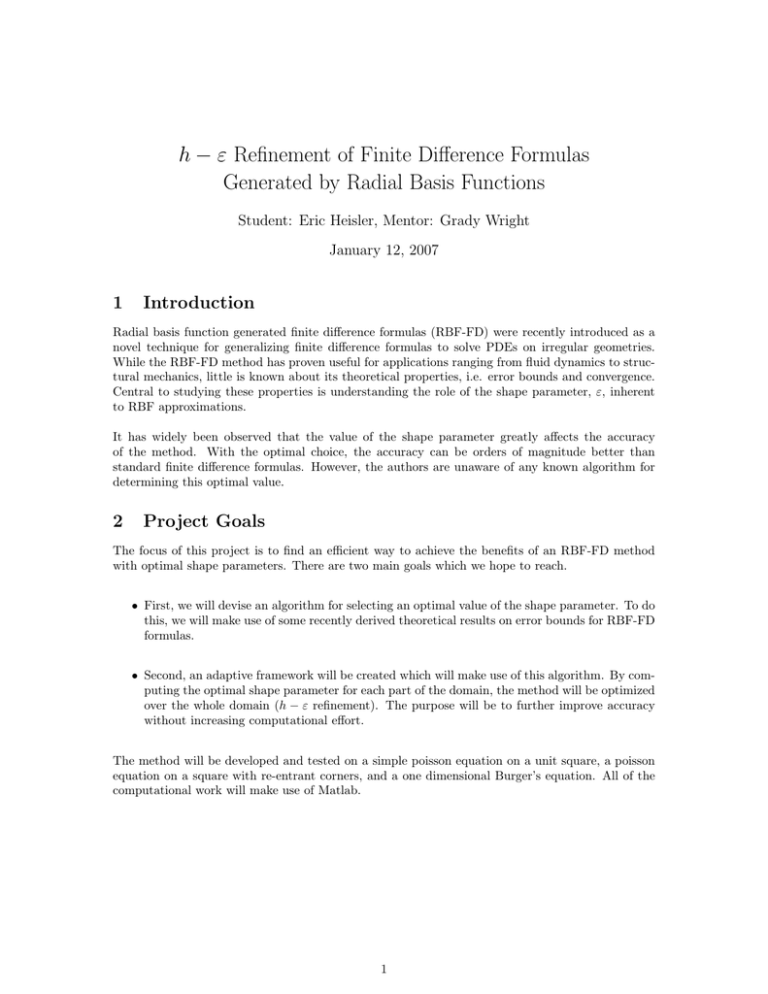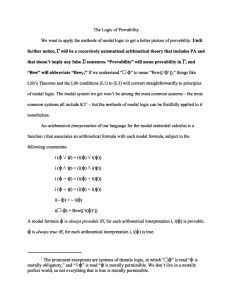h − ε Refinement of Finite Difference Formulas 1 Introduction
advertisement

h − ε Refinement of Finite Difference Formulas Generated by Radial Basis Functions Student: Eric Heisler, Mentor: Grady Wright January 12, 2007 1 Introduction Radial basis function generated finite difference formulas (RBF-FD) were recently introduced as a novel technique for generalizing finite difference formulas to solve PDEs on irregular geometries. While the RBF-FD method has proven useful for applications ranging from fluid dynamics to structural mechanics, little is known about its theoretical properties, i.e. error bounds and convergence. Central to studying these properties is understanding the role of the shape parameter, ε, inherent to RBF approximations. It has widely been observed that the value of the shape parameter greatly affects the accuracy of the method. With the optimal choice, the accuracy can be orders of magnitude better than standard finite difference formulas. However, the authors are unaware of any known algorithm for determining this optimal value. 2 Project Goals The focus of this project is to find an efficient way to achieve the benefits of an RBF-FD method with optimal shape parameters. There are two main goals which we hope to reach. • First, we will devise an algorithm for selecting an optimal value of the shape parameter. To do this, we will make use of some recently derived theoretical results on error bounds for RBF-FD formulas. • Second, an adaptive framework will be created which will make use of this algorithm. By computing the optimal shape parameter for each part of the domain, the method will be optimized over the whole domain (h − ε refinement). The purpose will be to further improve accuracy without increasing computational effort. The method will be developed and tested on a simple poisson equation on a unit square, a poisson equation on a square with re-entrant corners, and a one dimensional Burger’s equation. All of the computational work will make use of Matlab. 1


